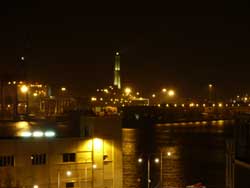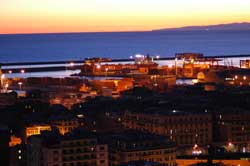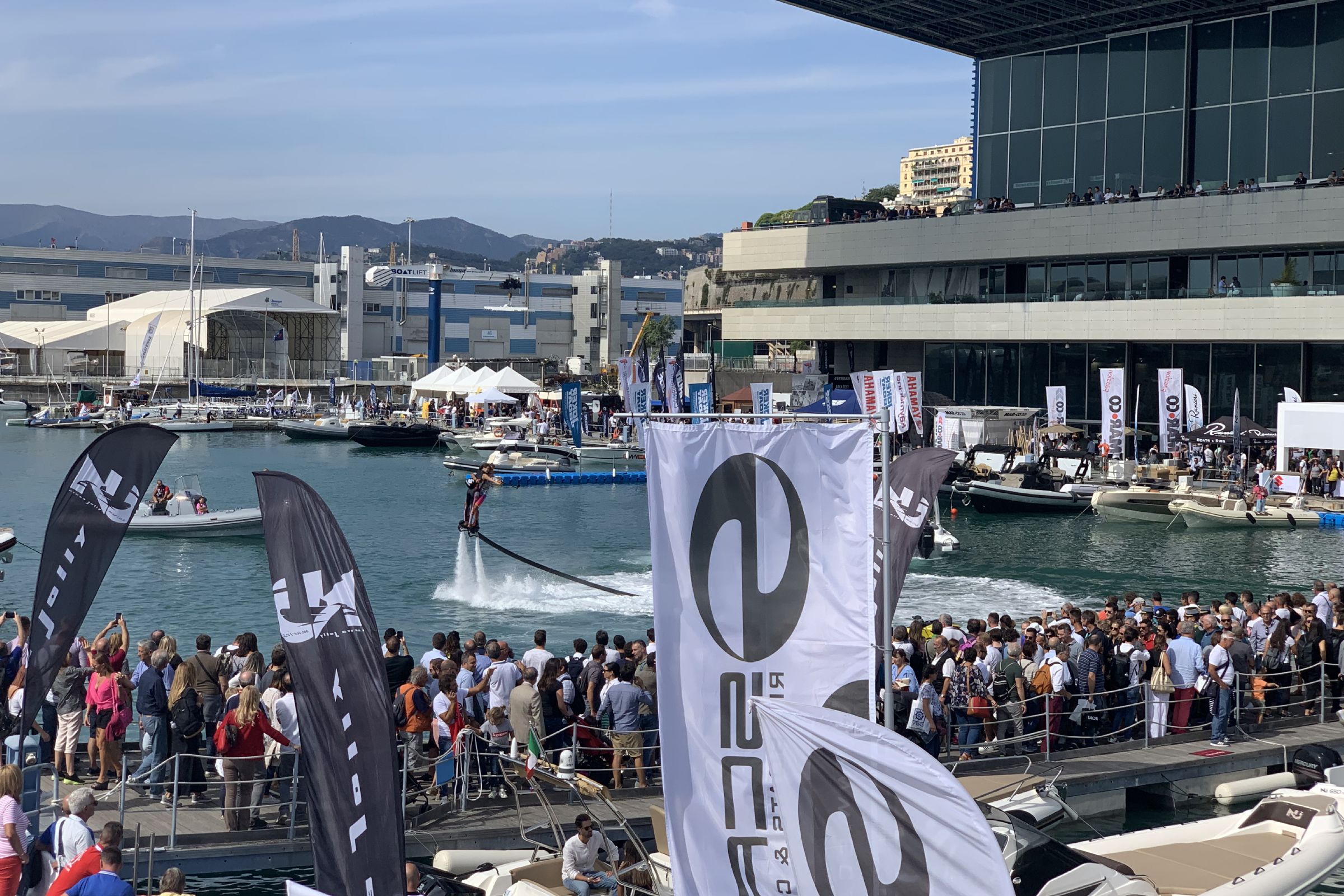Genoa, the modern city
Piazza De Ferrari , born at the end of the 19th century, is the heart of the city, and it is here that the Genoese gather for the most important public events. The Palazzo della Borsa Nuova (1912), the monument to Garibaldi (1892), the large circular fountain by C. Crosa di Vergag ni and the famous Teatro Comunale dell'Opera Carlo Felice , renovated in 1987, are the most identifying and well-known elements. .
 From the square, you enter via XX Settembre , which preserves the historic shops among liberty and extravagant architectural elements, up to the Monumental Bridge of 1899, next to which is the thirteenth-century Church of Santo Stefano . At the end of the street, Piazza della Vittoria opens up, designed during the fascism by Marcello Piacentini and which is an example of Genoese rationalism. The war memorial is inspired by the Roman triumphal arches, the INPS palace and Palazzo Nafta, similar to each other, repeat the geometric style typical of the twenty years.
From the square, you enter via XX Settembre , which preserves the historic shops among liberty and extravagant architectural elements, up to the Monumental Bridge of 1899, next to which is the thirteenth-century Church of Santo Stefano . At the end of the street, Piazza della Vittoria opens up, designed during the fascism by Marcello Piacentini and which is an example of Genoese rationalism. The war memorial is inspired by the Roman triumphal arches, the INPS palace and Palazzo Nafta, similar to each other, repeat the geometric style typical of the twenty years.
Piazza Dante dates back to the 1930s, where the Piacentini and Invernizzi skyscraper is located. To visit is the Edoardo Chiossone Museum of Oriental Art , inside the Di Negro villa , once frequented by Byron, Manzoni, Madame De Stael, and which houses the largest collection of Japanese art in the whole West.
The upstream ring road, created to favor the development of the city beyond the medieval walls, is connected with the lower city by straight streets that cross covered streams and are called streets of Thalweg and which sometimes end with spectacular stairways. From one of these streets, precisely from via Assarotti, you reach the Jewish temple with the Museum of Jewish culture . The most beautiful view of the old port and the historic center is visible from the Spianata di Castelletto , an elegant residential area at 80 meters above sea level.
Castello D'Albertis , houses the Museum for the Cultures of the World and can be reached by lift from the Principe Station: Genoa has developed a vertical transport system to move from the sea to the higher districts, such as the funicular that reaches the Righi, the highest district of the city (310 meters), where the Observatory is located. The New Walls are the largest walls in Europe (12 km of land and 7 km along the coast), built during the 1600s, and extend from the Lanterna to the hill of Carignano. In the upstream area, the Urban Park of the Walls is rich in botanical and faunal species.
 The International Fair of Genoa , where the International Boat Show and most of the city's trade fairs are held every year, was born in the 1960s and is located on the sea, near the mouth of the Bisagno stream.
The International Fair of Genoa , where the International Boat Show and most of the city's trade fairs are held every year, was born in the 1960s and is located on the sea, near the mouth of the Bisagno stream.
Along the same river, the Monumental Cemetery of Staglieno was born in 1851, which over the years has influenced many characters and writers such as Hemingway and Mark Twain. Staglieno, preserves various confessions (Catholic, Israelite, Anglican, Protestant and Greek-Orthodox) and, in addition to the famous tomb of Mazzini , and the tomb of Constance Lloyd, wife of Oscar Wilde , there are many funeral monuments dedicated to exponents of the mercantile bourgeoisie of the end of the 19th century designed over the course of a century by artists of various origins.
From the Fiera di Genova, the seaside promenade of Corso Italia begins, where there are bathing establishments and night clubs, and at the end of the promenade there is the maritime village of Boccadasse , preserved intact.
The village of Quarto , on the other hand, from where the Thousand of Garibaldi departed, preserves the monument to the hero of two worlds, the work of Baroni and inaugurated by D'Annunzio in 1915. The Anita Garibaldi promenade , in Nervi, starts from the small port and proceeds to overlooking the sea towards the east, letting you see the Portofino mountain on the horizon.
